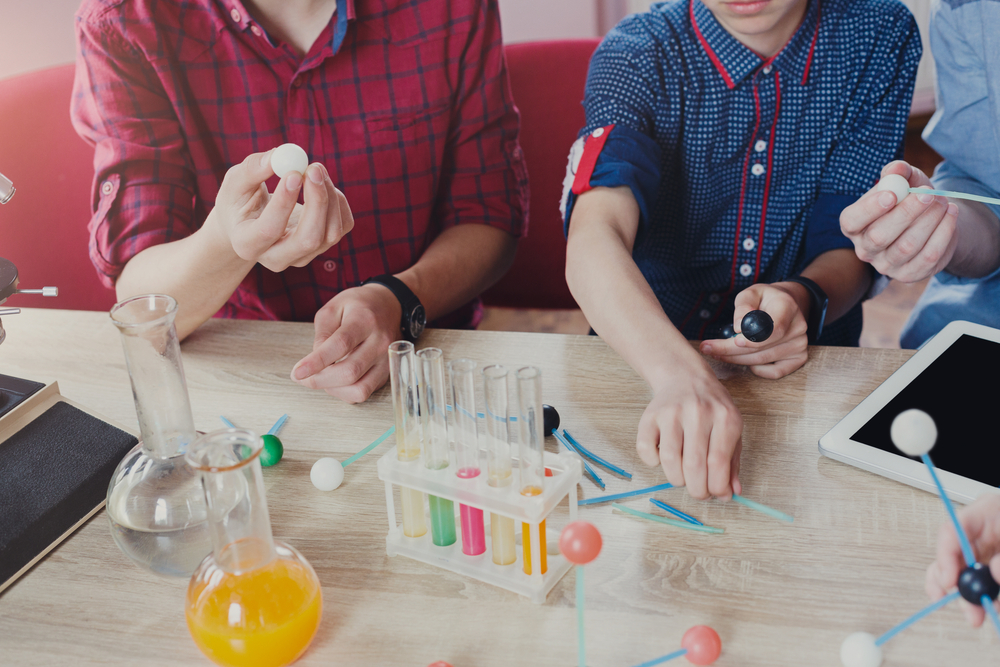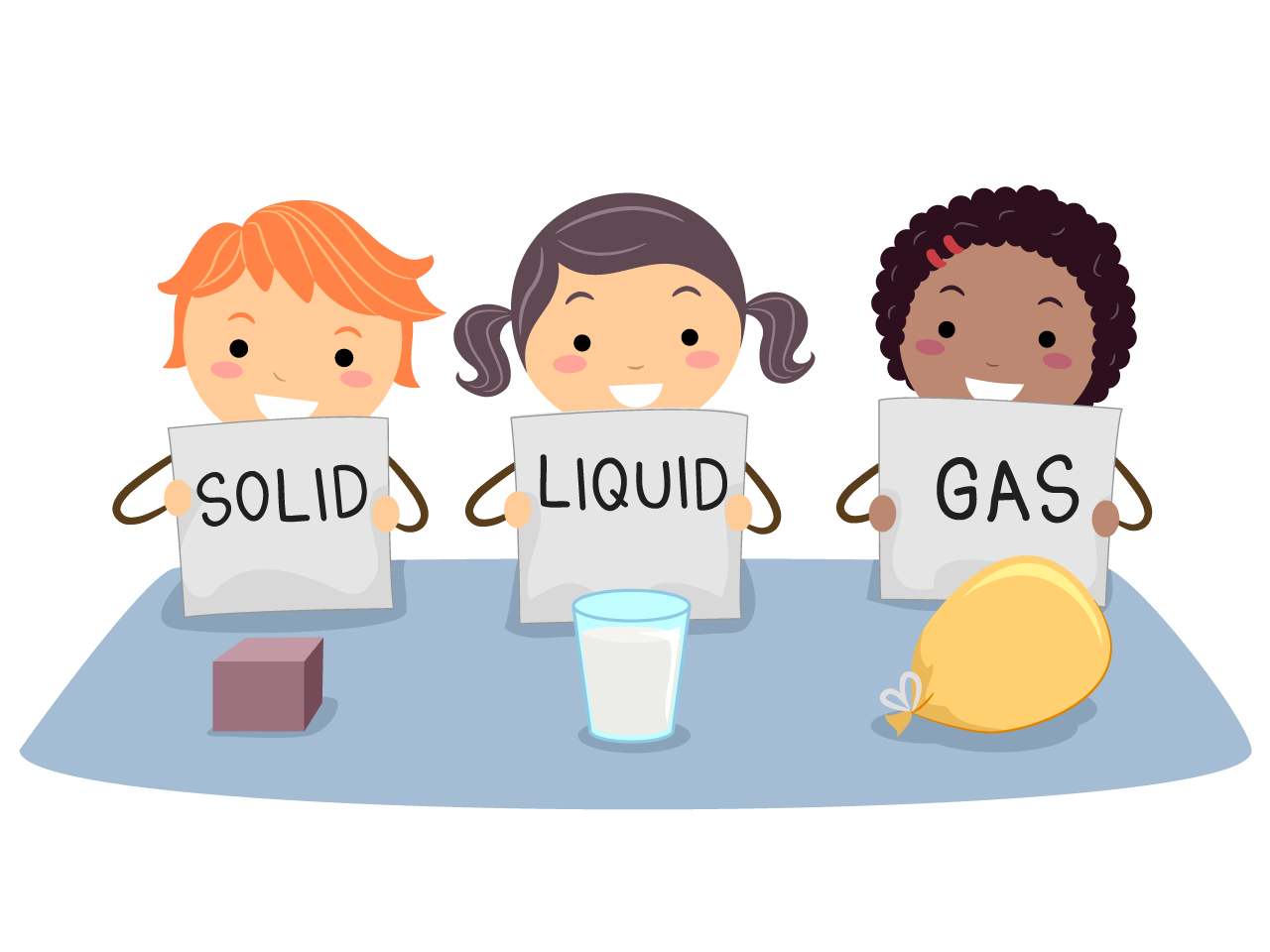Understanding light sources Physical Science Worksheets for Ages 5-6
4 filtered results
-
From - To
Introduce your young learners to the wonders of physical science with our "Understanding Light Sources" worksheets, designed for ages 5-6. These engaging and educational printables help children explore various light sources, from the sun to household lamps, fostering curiosity and foundational scientific knowledge. Through fun, interactive activities, kids will identify natural and artificial light sources, enhancing their learning skills while developing observational and critical thinking abilities. Perfect for early grade science classes or homeschooling, our worksheets make understanding light both easy and enjoyable. Unlock the brilliance of light with our expertly crafted resources!
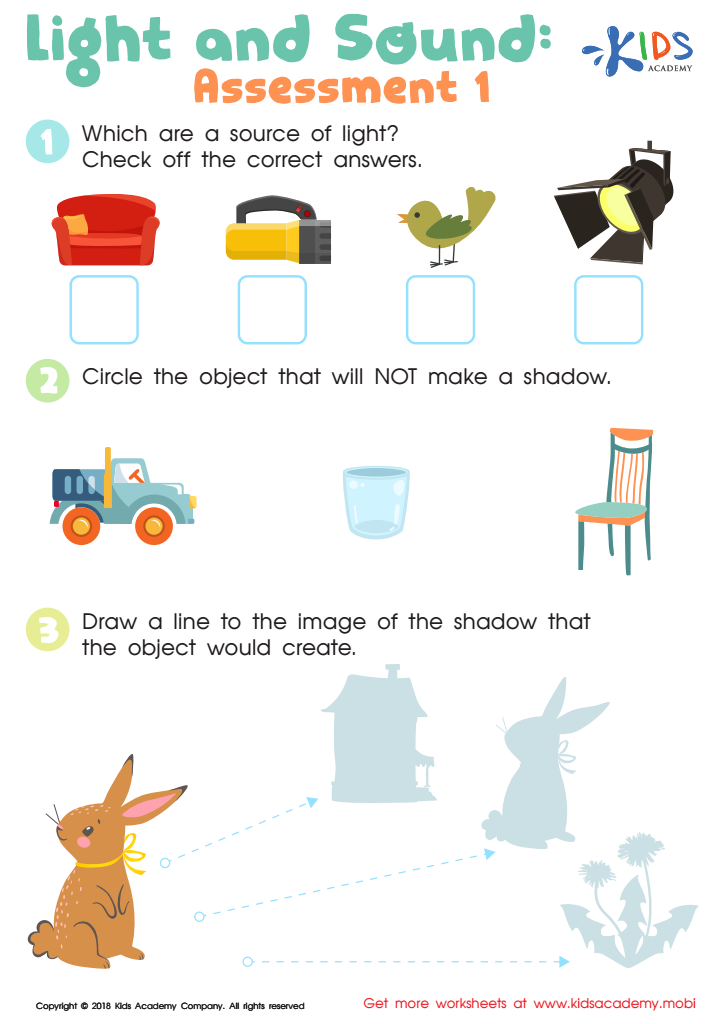

Light and Sound: Assessment 1 Worksheet
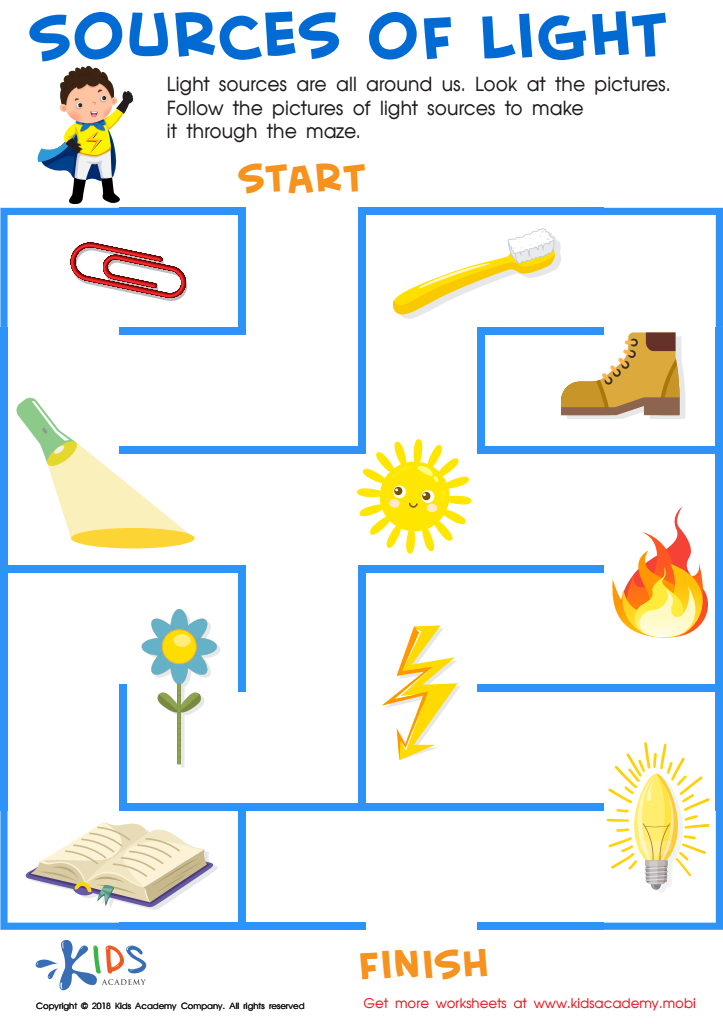

Sources of Light Worksheet
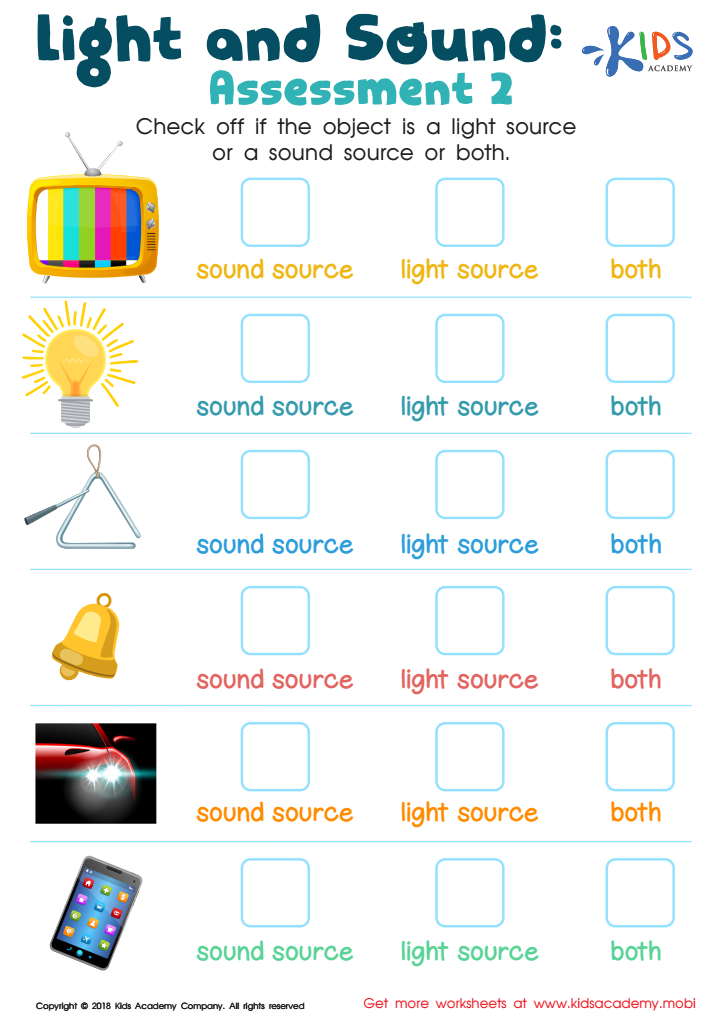

Light and Sound: Assessment 2 Worksheet
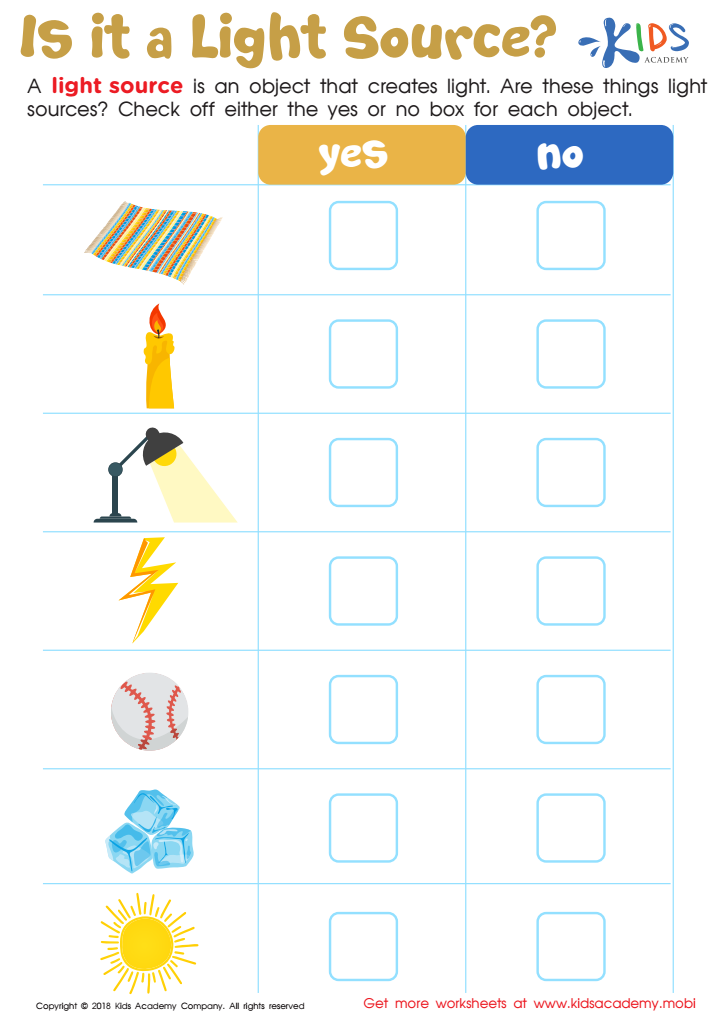

Is It a Light Source? Worksheet
Understanding light sources in early grades is essential for several reasons. For one, light is a fundamental aspect of everyday life; it impacts how we see the world and conduct daily activities. Introducing young children to different light sources — such as the sun, lamps, flashlights, and candles — helps them comprehend basic scientific concepts like visibility, shading, and energy.
Exploring light sources nurtures curiosity and fosters inquiry-based learning. Kids learn to ask questions, observe, and draw conclusions, which are foundational skills in scientific thinking. This process enhances critical thinking and problem-solving abilities, which are valuable in all areas of learning.
From a developmental perspective, grasping concepts about light supports cognitive growth. Lessons on light can be tied to sensory experiences that are highly engaging for young children, making abstract concepts concrete. By experimenting with light and shadows using simple materials, children gain hands-on experiences that reinforce their understanding.
Furthermore, teaching children about light supports safety awareness. They learn important lessons about the need to avoid looking directly at bright lights and understanding the role of light in safe environments.
Overall, early exposure to physical science concepts about light prepares children for more complex scientific topics in later grades, while supporting their broader learning and development.
 Assign to My Students
Assign to My Students




